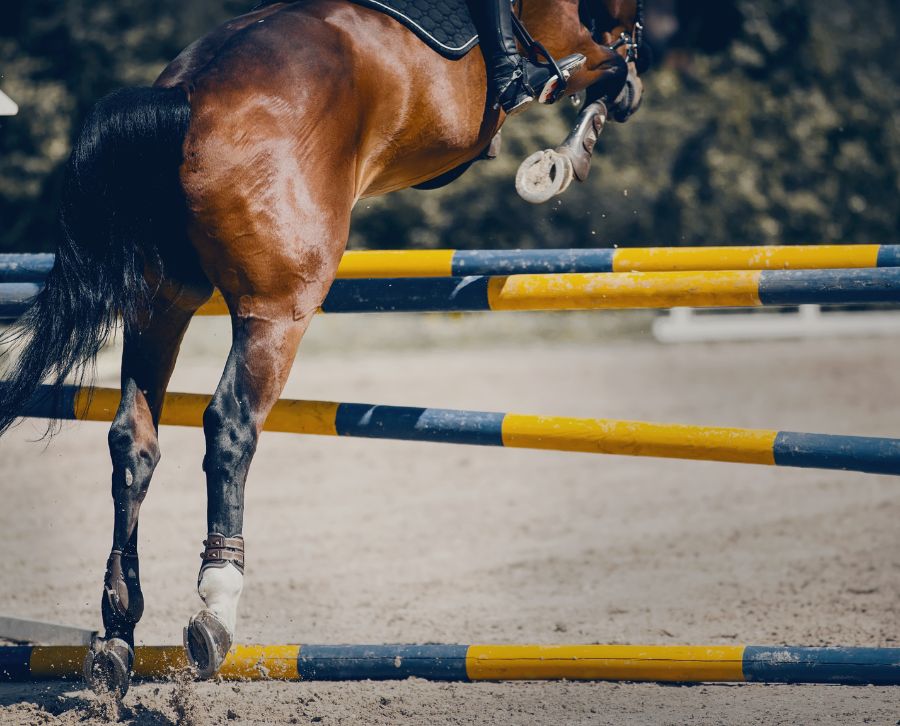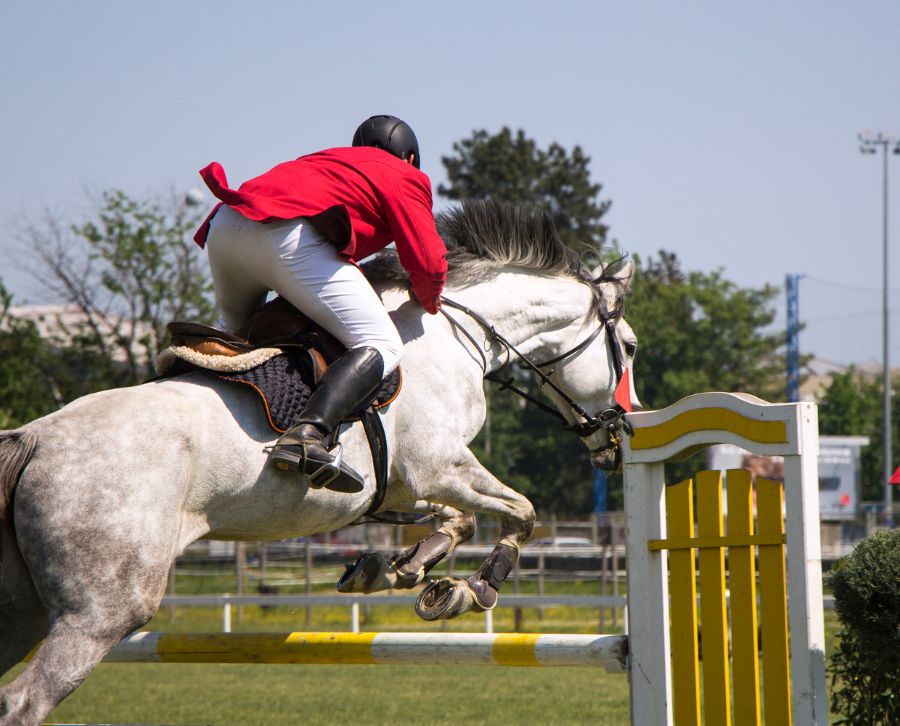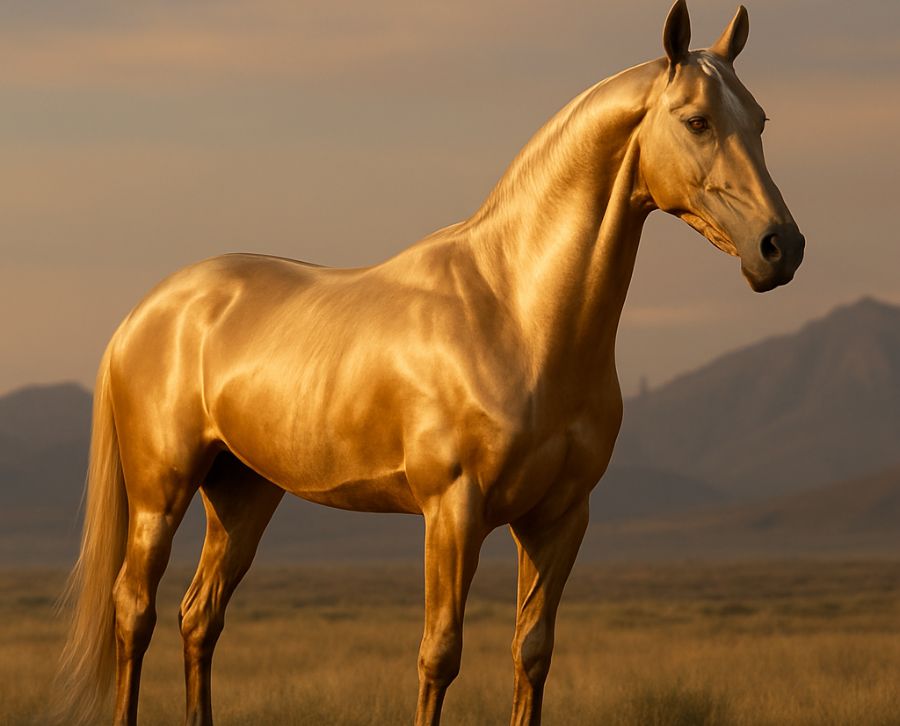Do you love horses, are you a faithful lover of the equestrian world, do you love watching equestrian competitions of different types, are you thinking of getting started in this world? Whatever the case may be, surely you have heard or read something about equestrian show jumping. Undoubtedly, one of the best known disciplines of this sport.
Therefore, at Equspaddock, as experts in the manufacture of equestrian and equestrian elements, we have prepared this detailed guide on this modality. Find out everything about jumping with equines and have fun while you learn with us!
Undoubtedly, this type of competitions offer fun, adrenaline, elegance and experience.

History of show jumping
The origin of this discipline dates back to ancient times in Ireland where this type of activity with horses was performed in hunting and military level, since dodging obstacles and jumping over them was part of survival and warfare.
Later, this type of sporting activity with equines spread throughout the rest of Europe and the rest of Europe. As a result, specific rules and regulations were established to carry it out and official federations were formed to organize events, regulate this type of competition, dedicate themselves to the specific training of this discipline, etc.
Today, it continues to evolve and adapt to new technologies, given that it has a large number of fans and spectators. Moreover, since it is a sport suitable for all types of people, regardless of their age and experience, because there are different levels, it is a very accessible sport.
The first show jumping competition
The first show jumping competition was held in 1865 in Dublin (Ireland) at the Dublin Horse Show. Since then, it became one of the best known and most practiced equestrian practices to this day.
Inclusion in the Olympic Games and its legacy.
In 1900, this equestrian discipline became part of the Olympic Games held in Paris (France). And since then, this modality has been part of this important event worldwide, except in 1912 and 1948.
Types of obstacles in equestrian show jumping
In this type of competition, the rider-horse pair must face a series of obstacles in different ways with rhythmic and elegant jumps. Therefore, depending on the type of obstacle they face, they need a certain type of maneuver, control, precision or power. Here are the most common and most commonly used jumps:
Vertical obstacles: challenge and strategy.
This type of jump requires precision and a lot of practice, since it is an obstacle or element formed by bars or barriers placed one on top of the other vertically and have no depth.
Bottom obstacles and estuaries: technique and precision
On the other hand, there are other exercises that also require precision and technique, but in a different form. This is the case of bottoms, also known as oxers, and estuaries. In the case of the bottoms, it consists of joining two verticals forming a single element, but with greater depth. And, in their case, the estuaries do not require a high jump to be able to combat the obstacle, but it is a ditch with water that is crossed without touching the water or the line that limits it.
Combination: the art of combination in the arena
Usually, a complete circuit in this equestrian discipline is made up of different jumps or tests. However, the same obstacle can be made up of different obstacles at the same time, and this is known as a combination jump. This combination must have a maximum distance of two strides and the different jumps that make up the combination are marked with the letters A, B and C.
The jumping technique: breakdown of phases.
Performing a show jump in equitation in a correct, elegant, rhythmic and coordinated manner between rider and animal requires a lot of training time, a lot of knowledge and a lot of experience. But, above all, like any other type of sporting discipline, it also requires technique.
In this case, beyond the fact that the animal has strength and dexterity, and the rider knows what he needs to do in each test, this consists of:
Approach and beat, how it is performed.
The first step to face an obstacle is the approach part. At this time, both approach at the required speed towards the obstacle itself in a balanced and coordinated manner. Then comes the impulsion part, where the horse gets impulsion with its hind legs and raises its body to be able to overcome the obstacle.
Flight and landing
When the horse is going over the obstacle, the rider must keep his back straight and hold the reins firmly and flexibly at the same time. Once the horse has cleared the obstacle, it must land on the track in a precise manner. To do this, the animal flexes its joints to be able to absorb the impact and recover.
Exit: return to canter and preparation
Once the animal has recovered its position, the rider resumes the rhythm with the reins and prepares to approach the next jump.
Training and preparation for competitors
As with any type of sport, training and preparation is necessary in order to be able to compete and compete against other pairs. In this way, you can perfect your technique, improve your physical conditioning and learn to manage and face obstacles.
Essential exercises and how to perform them for both rider and horse.
The type of exercises to be performed in training depends very much on the experience and level of the pair; and the same goes for the intensity of the training. However, there are some types of movements and exercises that are always done. In the case of the horse: trot and canter, stretching, small jumps, jumping series…. While the rider can prepare himself physically by strengthening the musculature, improve posture and balance and improve his coordination with the animal.
Equipment and accessories for showjumping
Now that you know what types of show jumping there are and how each one is performed, do you know the material and equipment necessary to be able to perform them? This is just as important to ensure success in each test.
– Jumping chair. These are designed to provide greater stability to the rider at the moment of the jump.
– Protectors for the animal. It is important to keep the animal’s health in mind at all times, so the animal’s legs are usually protected to avoid possible injuries when jumping.
– Reins. These are the essential tool for guiding the horse and measuring the strength of each jump.
– Stirrups. This element is essential for the rider to maintain balance and posture when jumping.
Show jumping, the equestrian discipline for everyone
As we have mentioned, there are different levels of difficulty in this type of competition. This allows the rider to adapt according to his level, knowledge and experience. If you haven’t tried it yet, are you up for it?





